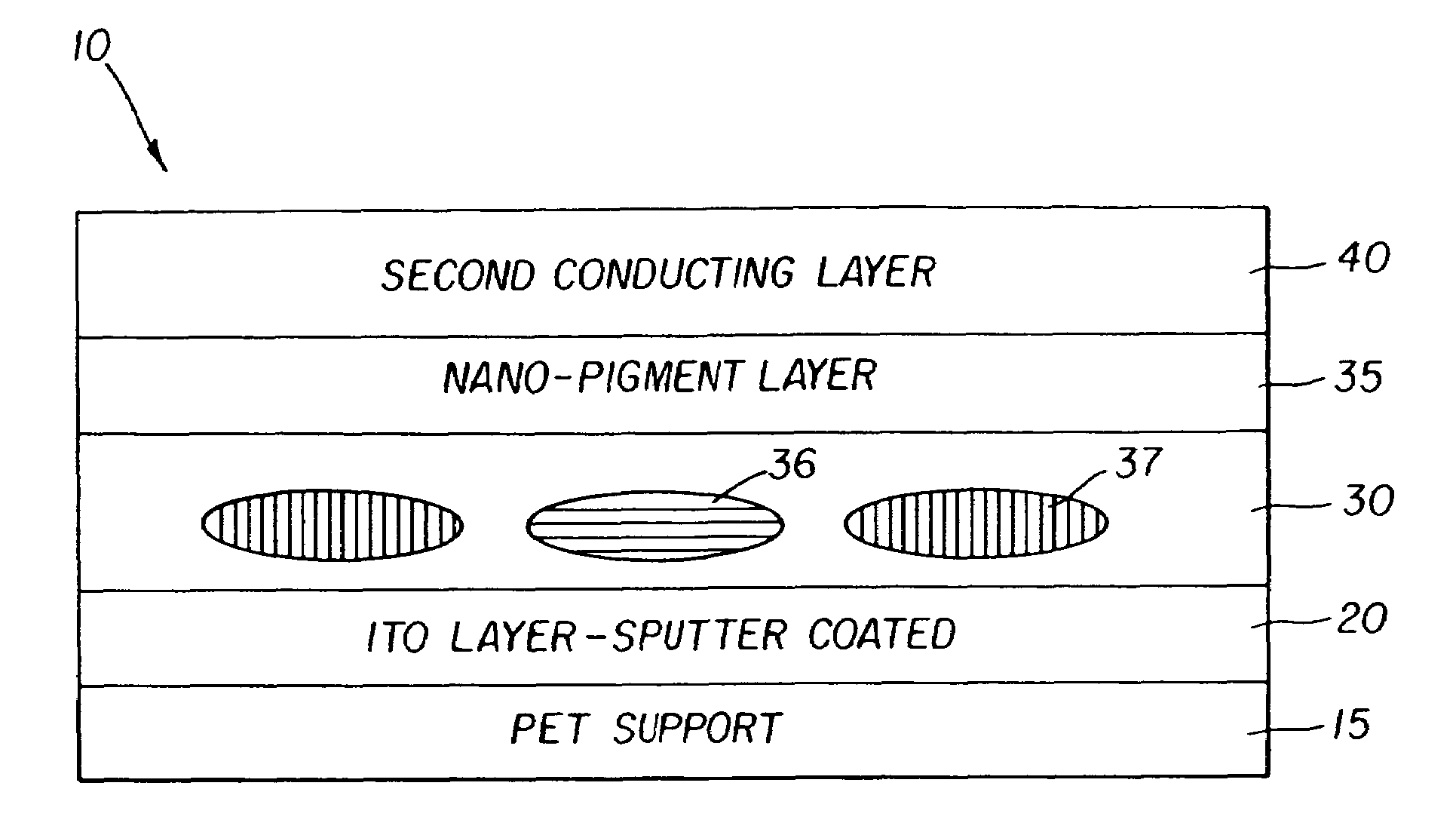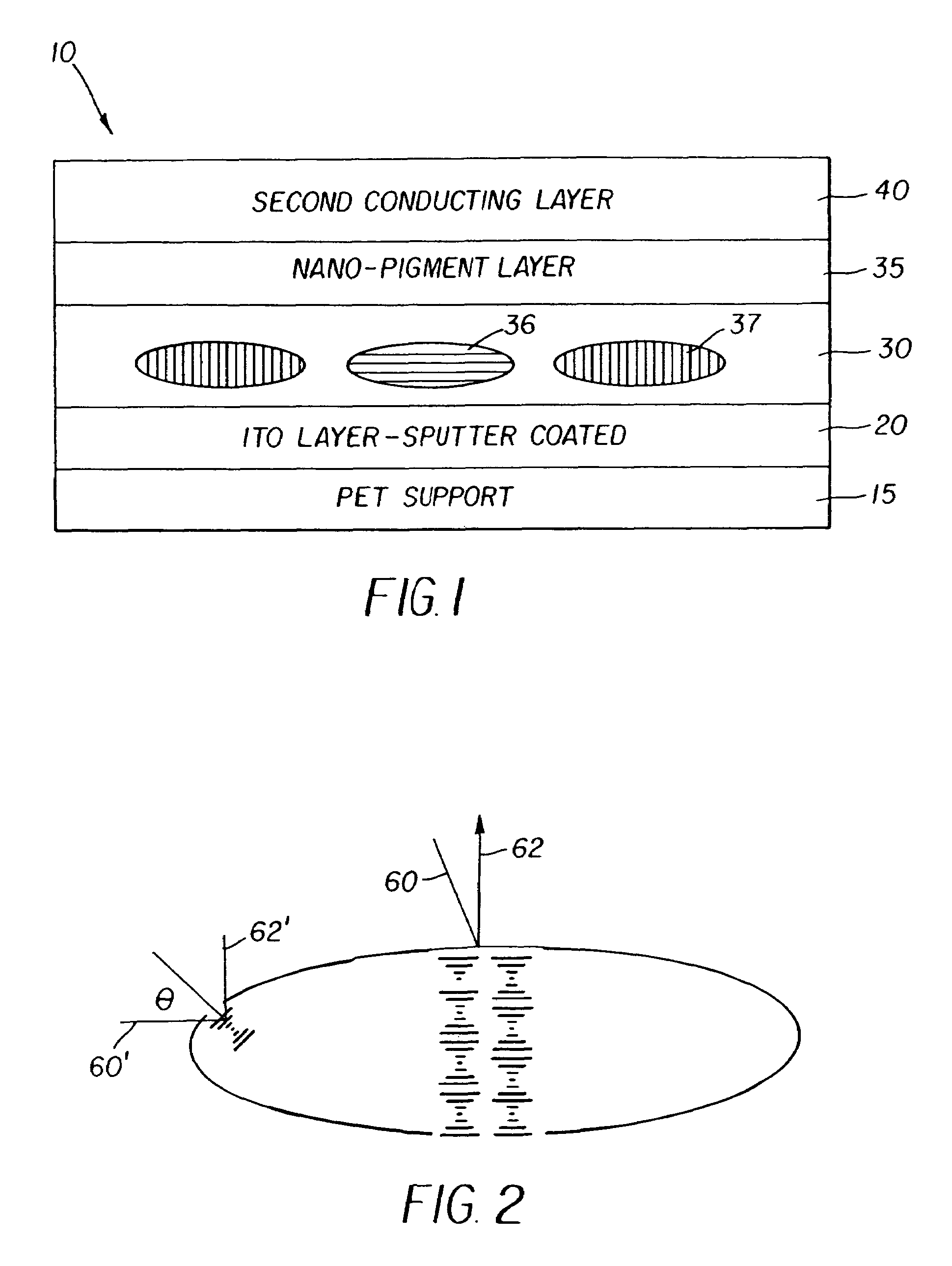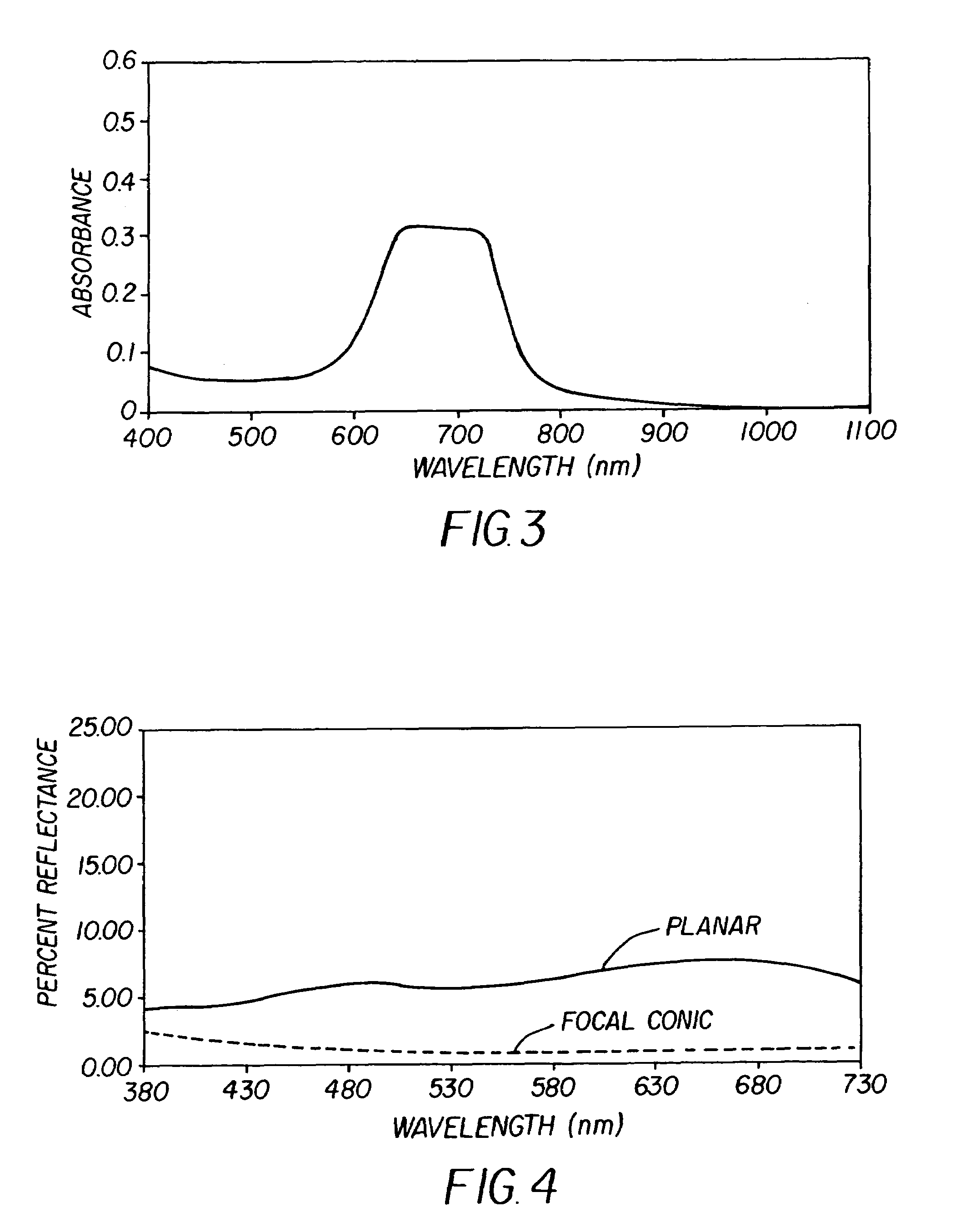Reflective chiral-nematic liquid crystal display with broadband reflection
a liquid crystal display and broadband reflection technology, applied in liquid crystal compositions, instruments, chemistry apparatus and processes, etc., can solve the problems of relatively low contrast ratio, inability to teach methods for obtaining a broadband reflection display having a more neutral appearance, and inability to teach methods to improve display contrast, etc., to achieve the effect of improving neutral color
- Summary
- Abstract
- Description
- Claims
- Application Information
AI Technical Summary
Benefits of technology
Problems solved by technology
Method used
Image
Examples
example 1
[0060]This example illustrates the influence of laydown of the liquid-crystal (“LC”) material on backscattering from the focal conic state and contrast of the display.
[0061]For 10 μm droplets, full monolayer coverage can be expected at a laydown of about 6.5 g / m2 (600 mg / ft2) of the liquid-crystal composition or a wet coverage of 80.7 cm3 / m2 (7.5 cm3 / ft2) if the coating composition is made up of 8% the liquid-crystal material and 5% gelatin by weight. An amount in slight excess of this will still constitute a substantial monolayer, well below a bi-layer of domains.
[0062]Chiral nematic compositions with center wavelengths of reflection at 470 and 690 nm were prepared by adding the appropriate amount of a high-twist chiral dopant to the nematic host mixture BL087 obtained from Merck, Darmstadt, Germany. The compositions were evaluated by placing a small amount on a glass slide with a cover slip. The “absorption” spectra were then obtained on a standard spectrophotometer. The spectrum ...
example 2
[0067]This example illustrates fabrication of a broadband bi-stable display with high contrast ratio. Consumers find such displays visually pleasing because of their more neutral appearance.
[0068]It should be noted that the spectrum of the LC material in the planar state in a coated droplet is much broader than the spectrum of the material between glass slides. For example, the red reflecting LC material shown in FIG. 3 has a spectrum as shown in FIG. 6 when it is in a coated droplet because of the elliptical shape of the droplet. As shown previously in FIG. 2, measurable reflectance for a coated droplet may be obtained in this case at lower wavelengths because of the Bragg reflection condition at the curved boundary of a droplet. The wavelength of maximum reflection λmax is given by λmax=np cos θ where n is the average refractive index of the LC material and p is its pitch. Note that cos θ decreases as θ increases. In other words, a red reflecting LC composition may actually reflec...
PUM
| Property | Measurement | Unit |
|---|---|---|
| peak reflected wavelength | aaaaa | aaaaa |
| peak reflected wavelength | aaaaa | aaaaa |
| diameter | aaaaa | aaaaa |
Abstract
Description
Claims
Application Information
 Login to View More
Login to View More - R&D
- Intellectual Property
- Life Sciences
- Materials
- Tech Scout
- Unparalleled Data Quality
- Higher Quality Content
- 60% Fewer Hallucinations
Browse by: Latest US Patents, China's latest patents, Technical Efficacy Thesaurus, Application Domain, Technology Topic, Popular Technical Reports.
© 2025 PatSnap. All rights reserved.Legal|Privacy policy|Modern Slavery Act Transparency Statement|Sitemap|About US| Contact US: help@patsnap.com



